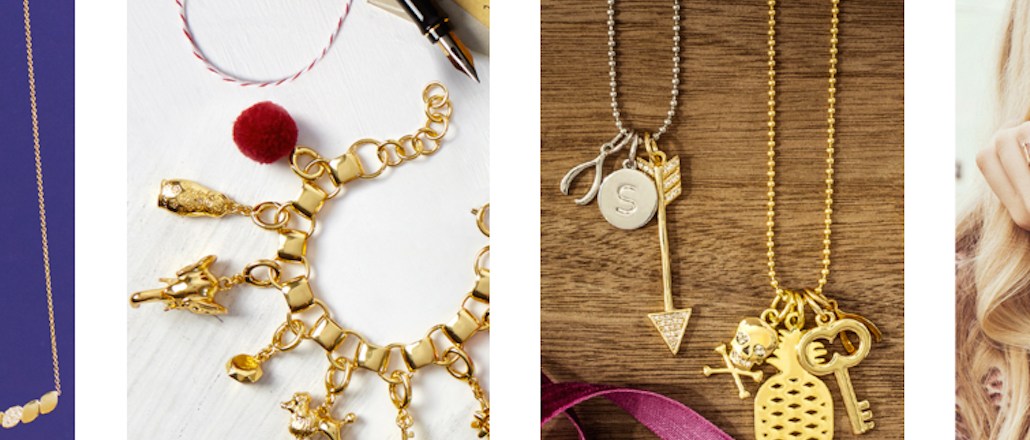
Mobile is eating the world, and that includes retail.
Four-year-old online jewelry retailer BaubleBar is rolling out a mobile app and readying wearable tech. BaubleBar’s new mobile app, which launched this week, came together in six months with an eight-person tech team behind the project. Its line of wearable tech bracelets, which were a result of a partnership with Jawbone, went from conception to production to the online website in a few weeks.
“There’s a lot of inertia that builds up in a bigger company,” said Darren Srikumpol, BaubleBar’s chief technology officer. “As a startup, we can get things off the ground that would otherwise take a long time.”
New York-based BaubleBar also has the benefit of being a VC-funded company, having raised a total of $15.6 million in three rounds of funding with Burch Creative Capital leading the most recent $10 million round in 2014. The company boasts filling 1,500 orders a day. It doesn’t share revenue numbers, but Forbes estimated in June that the company’s sales were around $75 million.
BaubleBar’s founders Daniella Yacobovsky and Amy Jain, both 32, launched the company to fill a blank spot for a go-to e-commerce jewelry company that provided quick, affordable and trendy styles to women. They found that their target consumer was picking up pieces of jewelry from stores like H&M and Ann Taylor, but had no reliable place to shop for specific products. Other companies like Gemvara also sell jewelry online, but are dealing with pricier custom products; Jewelmint, a close competitor selling indie designer goods online, shuttered in 2013.
Building a BaubleBar mobile app was an easy decision, according to Srikumpol, after the team noticed key consumer habits. Fifty percent of the site’s traffic was coming from mobile, and its Instagram page was driving more conversion than its homepage (both on desktop and mobile).
“The better the mobile experience, the better for the customer,” said Srikumpol. “Our motivation was to be where our customer is, and we didn’t feel that could wait for long.”
Srikumpol said the app’s features are meant to make mobile browsing and purchasing better for the user, and unlike competitor Alex and Ani, the company didn’t make content a priority in its mobile experience. Instead of features like Alex and Ani’s Snapchat Discover-like daily scroll and horoscope implementation, BaubleBar is implementing one-tap mobile transactions enabled by Apple Pay and filling the smartphone screen with large, hi res product images. BaubleBar’s fast-fashion business model draws users back daily to check out the newest batch of styles.
Forrester research found, however, that 5 percent of smartphone users’ time spent in apps is used in retail apps. That’s not a lot of attention for something like BaubleBar, which specializes in fashion jewelry, when competing with a juggernaut like Amazon on mobile. Outside of transactions, BaubleBar is optimizing for its most engaged customers — those who participate in its loyalty program, The Vault — who can use the app to keep tabs on points they collect and can redeem for future purchases. In future versions, the app will roll out a user-generated content feed and push notifications for newly on sale items.
BaubleBar’s mobile app was just part of the company’s new tech-forward developments this fall. Its first foray into wearable tech came, in the form of a partnership with Jawbone to create bracelets that can hold Jawbone’s fitness tracker disc, Up Move.
After Jawbone approached BaubleBar to collaborate on the six-piece collection of bracelets that make the fitness tracker flashier, the pieces premiered on BaubleBar’s online store in a matter of weeks. All but one bracelet has sold out since the collection went on sale at the end of October, but to keep up momentum for the holidays, BaubleBar’s retail collaboration with Target has the company stepping away from jewelry and into tech accessories, including headphones and phone cases.
“Our customer is tech driven, but she wants something fashion forward,” said Wilson Lee, BaubleBar’s chief sourcing officer. Our product team is constantly tracking trends and seeing what our customer likes, and we found she wants wearables that she’ll actually wear.”
According to IDTechEx data, the wearable industry is expected to grow from $20 billion in 2015 to $70 billion in 2025. Lee said that the Jawbone collaboration is first of more to come (just maybe not with Jawbone, which last week cut its staff by 15 percent and closed its New York office) .
“We’re nimble,” said Lee. “You won’t see anything outdated from us.”
More in Marketing

Meta’s Threads expected to have ads this year
The move would make Threads Meta’s latest bit of ad real estate venue just over a year after its launch.

Mobile esports reaches new heights in 2024 with a boost from Saudi Arabian investment
Mobile esports activity has been picking up gradually since 2021, but 2024 could be one of the most lucrative years yet for the esports teams and players participating in popular mobile games such as “PUBG Mobile” and “Mobile Legends: Bang Bang” (MLBB).

Q1 ad rundown: there’s cautious optimism amid impending changes
The outlook for the rest of the year is a tale of two realities.





